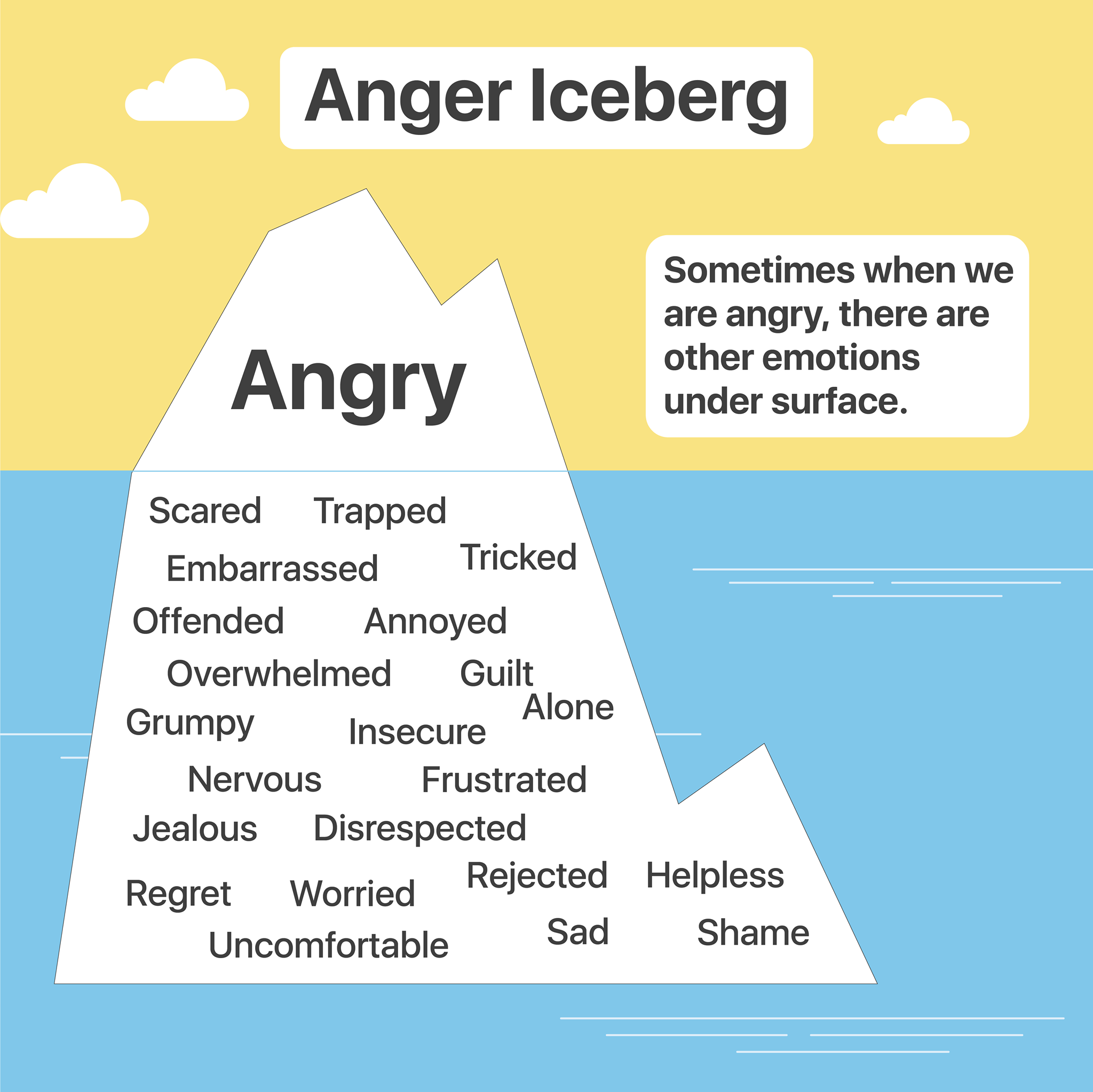
By going digital, this process is simplified – not to mention much better for the environment!
ANGER ICEBERG TEMPLATE PDF
We’ve designed the PDF to be editable, meaning you simply have to follow the link to the worksheet and it can be immediately edited from there.

Although this step can be completed independently by the client, you may prefer to fill it in together. These prompts encourage the client to reflect on the triggers of their anger, allowing them to consider the underlying emotions that often coexist with anger. In the remaining area of the iceberg, the client should write their responses to the discussion questions included on the worksheet.The top of the iceberg has the word “Anger” pre-written in it, so the client can just leave this section as is.The process of completing the worksheet is as follows: We’ve included some prompts on the template so that your clients can have guidance for the types of responses they should include, but you might find it more helpful to walk them through each step. The next step involves clients completing the worksheet.

The worksheet will open in a PDF format, and from here you can download, save, and print it. This can be completed either by following the link on this page or via the Carepatron platform. Naturally, the first thing you need to do is access the worksheet.
ANGER ICEBERG TEMPLATE FREE
If you’re already confident in knowing how you can access and implement these resources then feel free to skip to the next section (where we provide a sample completed template!). There are a few steps involved in using this worksheet, but luckily, they are pretty easy to follow. Accessing and using our worksheet is extremely easy, and in this guide, we’ll provide you with a step-by-step guide demonstrating how this is achievable, before outlining some of the relevant benefits. These emotions are often triggers for the anger that the person outwardly displays, and recognition of this process allows people to regulate their emotions more.

The resource uses a visualization of an iceberg, encouraging people to write down the non-anger emotions in the bottom part of the image. In order for people to understand the nature of their emotions more deeply, it’s important that they are able to recognize and identify what these simmering (and likely contributing) emotions are.Ĭarepatron has designed a worksheet that aims toward allowing clients to engage more deeply with their emotions.

This model is based on the idea that when anger is outwardly present, it is very likely that there are other emotions “hidden” beneath an individual’s surface. Essentially, this worksheet provides a visual depiction of an iceberg, and the client is prompted to write in the majority of the iceberg the other emotions they are feeling (in addition to anger). An Anger Iceberg Worksheet is a resource designed to help clients more comprehensively understand their emotions.


 0 kommentar(er)
0 kommentar(er)
